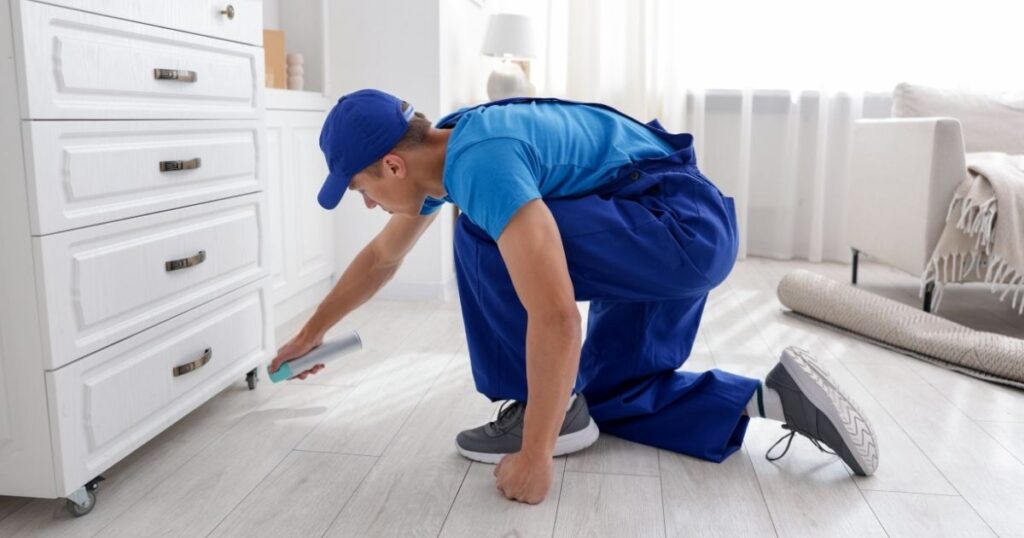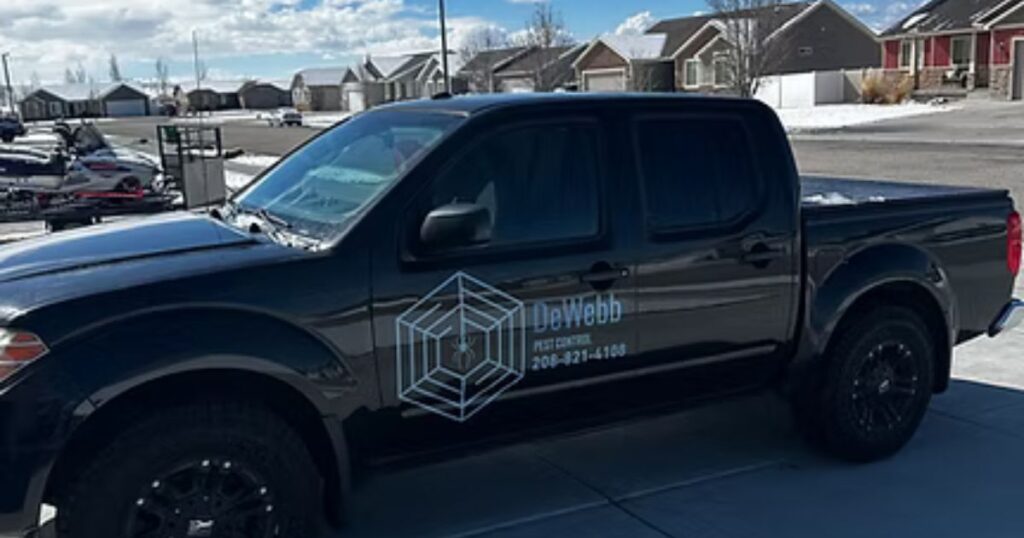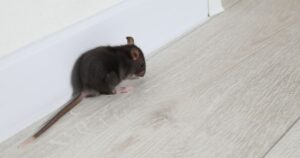Best Time for Pest Control in Southeast Idaho

If you’ve ever wondered about the best time for pest control in Idaho, you’re not alone. Seasonal changes in Southeast Idaho bring different pest challenges — from spiders in spring to mice in the fall — and knowing when to schedule treatments can make a big difference in keeping your home protected year-round.
In this guide, we’ll break down the seasonal pest patterns specific to our region and explain how timing, frequency, and safe treatment options can help you protect your home, family, and pets. You’ll also find practical tips on choosing the right plan and what to expect from a reliable local provider.
Here’s what we’ll cover:
- Why Timing Matters for Pest Control in Idaho
- Seasonal Pest Control in Southeast Idaho (Spring, Summer, Fall, Winter)
- How Often Should Pest Control Be Done in Idaho?
- Safety and Family Considerations
- Local Factors That Impact Pest Control Needs
- Choosing the Right Pest Control Plan in Southeast Idaho
First, let’s look at why timing plays such an important role in effective pest control.
Why Timing Matters for Pest Control in Idaho
When it comes to keeping your home pest-free, timing is everything. In Southeast Idaho, the changing seasons play a big role in when pests are most active and how effective treatments will be. Scheduling services at the right time not only helps eliminate current problems but also prevents future infestations before they start. Think of it like seasonal maintenance for your home—just as you prepare your yard for winter or clean out gutters in the spring, pest control works best when it’s planned around local pest activity cycles.
Here in Southeast Idaho, our long winters and warm summers create unique patterns of pest behavior. For example, ants and spiders often become more visible in the spring as the weather warms, while mice and voles look for shelter inside homes once the temperatures drop in the fall. Wasps and hornets peak during the summer, especially in backyards, patios, and around eaves where families gather. Even mosquitoes thrive near irrigation areas during the hottest months, as the U.S. Environmental Protection Agency notes. By understanding these seasonal shifts, you can schedule treatments at the most effective times rather than waiting until the problem feels overwhelming.
Common Pests in Idaho Homes
- Spiders – Often appear in basements, garages, and corners during spring and fall.
- Ants – Search for food and water in kitchens and yards during spring and summer.
- Mice and voles – Common in fall and winter as they seek warmth indoors.
- Wasps and hornets – Active in late spring through summer, nesting around rooflines and outdoor spaces.
- Mosquitoes – Thrive in summer, especially near standing water or irrigated lawns.
- Voles – Known to damage lawns and landscaping during cooler months.
Key Takeaway: The best time for pest control in Idaho depends on the season and the pests most active in your area. By planning treatments around these natural cycles, you’ll get longer-lasting results, protect your family and pets, and save yourself the stress of dealing with repeat infestations. Effective pest control isn’t just about reacting when you see a problem—it’s about staying ahead of it year-round.
Seasonal Pest Control in Southeast Idaho
Every season in Southeast Idaho brings its own set of pest challenges. By knowing what to expect throughout the year, you can plan ahead and keep your home consistently protected. Here’s a practical breakdown of what homeowners in Rexburg, Idaho Falls, Pocatello, Rigby, and surrounding areas should prepare for in each season.
Spring Pest Control
As the snow melts and temperatures rise, pests begin to wake up and search for food and shelter. Spiders and ants are among the first to become active, often appearing in kitchens, basements, and around entry points. Early wasp activity also starts as nests are built under eaves and in attics.
Spring is the perfect time to start preventive treatments. Addressing pests now helps stop infestations before they take hold, setting the tone for a pest-free summer. Think of it as a “spring cleaning” for your home’s defenses—refreshing your protection when pests are just beginning to stir.
Summer Pest Control
Warm weather means more time outdoors, but it also brings an increase in pests. Wasps, hornets, and mosquitoes thrive during Southeast Idaho summers, especially in backyards, patios, and near water sources. Ants also become more aggressive in their search for food, sometimes leading to large colonies in yards or driveways.
In summer, exterior and yard treatments are especially important. Treating outdoor areas like lawns, gardens, and home perimeters can help keep stinging and biting pests away from where your family spends time. It’s not just about comfort—it’s about safety, especially for children and pets.
Fall Pest Control
When the air cools, pests start looking for warmth. Mice, voles, and spiders are the main culprits, sneaking into garages, attics, and crawlspaces. For many Idaho homeowners, fall is when they first notice rodent droppings or spider activity indoors.
This is the best time to focus on mouse prevention in Southeast Idaho homes. Sealing entry points, setting up barriers, and applying preventive treatments can save you the headache of dealing with rodents inside all winter long. By acting in the fall, you create a protective shield before pests move in.
Winter Pest Control
Many homeowners ask, “Do I really need pest control in winter in Southeast Idaho?” The answer is yes. While outdoor pest activity slows in the cold, this is when rodents, spiders, and even dormant insect eggs can linger inside your home.
Winter is a great season for inspections and maintenance treatments. Professionals can identify problem areas, treat hidden pests, and prepare your home for spring. Think of winter pest control as laying the groundwork—keeping pests from surviving indoors and preventing them from bouncing back stronger in the warmer months.
Key Takeaway: By aligning your pest control with the seasonal cycles of Southeast Idaho, you’ll get ahead of infestations before they start. Spring and summer are about stopping pests at their peak activity, while fall and winter focus on prevention and protection indoors. Staying on schedule each season ensures your home stays comfortable, safe, and pest-free all year long.
How Often Should Pest Control Be Done in Idaho?
One of the most common questions homeowners in Southeast Idaho ask is, “How often should I schedule pest control?” The answer depends on your home, your location, and the types of pests you’re dealing with. While some situations call for short-term solutions, the best results come from building a consistent, year-round plan.
Monthly vs. Quarterly Pest Control in Idaho
- Monthly Treatments: Monthly pest control is ideal for homes with recurring or severe issues, such as frequent spider sightings, stubborn ant colonies, or ongoing rodent activity. With monthly visits, your home stays under close watch, and small problems can be caught before they escalate.
- Quarterly Treatments: Quarterly service (every 3 months) is a good fit for many Idaho homes. Seasonal treatments are often enough to keep pests like wasps, ants, and mice in check, especially when combined with preventative measures like sealing entry points and maintaining clean outdoor spaces.
Both options can be effective—but the right choice depends on your home’s environment. For example, a rural property near fields may require more frequent service than a townhouse in Ammon or Idaho Falls.
Preventive vs. Reactive Service
It’s tempting to wait until you see a problem before calling in help, but reactive pest control usually ends up costing more time, money, and stress. By the time you notice ants in the kitchen or mice in the garage, they’ve often already established colonies or nests.
Preventive pest control keeps issues from getting that far. Regularly scheduled treatments stop pests before they spread, giving you peace of mind and long-term protection. Research shows that preventive pest control and integrated pest management reduce long-term infestations more effectively than reactive measures.
Think of it like oil changes for your car—it’s much cheaper and easier to maintain prevention than to deal with a breakdown.
Why Year-Round Pest Prevention is Best
For Southeast Idaho homes, year-round pest prevention is the most reliable solution. Seasonal treatments align with pest activity cycles, so your home is always protected whether it’s ants in the spring, mosquitoes in the summer, or mice in the fall.
A year-round plan also provides consistency—you know your home is being monitored and treated at the right times, without having to scramble when a problem shows up. Families with kids, pets, or rural properties often find this approach especially reassuring because it combines safety, convenience, and effectiveness.
Key Takeaway: While one-time or “as-needed” pest control can help in emergencies, the smartest approach for Southeast Idaho homeowners is a preventive, year-round service plan. Whether monthly or quarterly, staying consistent ensures your home is protected through every season and saves you from the frustration of recurring infestations.
Safety and Family Considerations
For many Southeast Idaho homeowners, one of the biggest worries about pest control isn’t just getting rid of bugs or rodents—it’s making sure the treatments are safe for children, pets, and the home itself. That’s a valid concern. The good news is that modern pest control methods are designed with family safety in mind while still being effective against pests.
Are Pest Control Treatments Safe Around Kids and Pets?
Yes—when applied correctly by trained professionals, pesticides can be used safely in homes with minimal risks to people and pets, according to the EPA’s Safe Pest Control guidance. Treatments are carefully placed in areas where pests live and travel (like cracks, entry points, and exterior foundations), not in spaces where children or pets play. This approach reduces exposure while keeping protection strong.
Eco-Friendly Options for Southeast Idaho Homes
Many families today prefer eco-friendly pest control solutions that prioritize both effectiveness and peace of mind. These methods use products and application techniques designed to be low-toxicity, environmentally responsible, and safe for use around homes with kids, pets, or sensitive individuals. It’s a way to protect your family while also protecting your surroundings.
Thorough and Reliable Protection
Safety isn’t just about the products—it’s also about how the service is delivered. Rushed treatments can miss key problem areas or leave families uncertain about what was applied. A reliable provider takes the time to explain each step, answer your questions, and ensure the treatment plan fits your home’s needs. For example, DeWebb Pest Control prioritizes careful, detailed service and free follow-up visits if issues reappear, giving you both safety and consistency.
Key Takeaway: You don’t have to choose between keeping your family safe and keeping pests out. With family-safe and eco-friendly pest control treatments, you can have both. By working with a provider who values thoroughness and transparency, you can feel confident that your home, kids, and pets are well-protected—without compromising on safety or effectiveness.
Local Factors That Impact Pest Control Needs
Not every home in Southeast Idaho faces the same pest challenges. Where you live—whether it’s a rural property outside Rigby or a townhouse in Idaho Falls—plays a big role in the types of pests you’ll encounter and how often you may need service. Understanding these local factors helps homeowners choose the right approach for lasting protection.
Rural vs. City Pest Pressures
- Rural Properties: Homes on acreage or near fields often see higher activity from mice, voles, and mosquitoes. Open spaces and irrigation systems create more opportunities for pests to thrive. Outbuildings like barns, sheds, or detached garages can also attract rodents and nesting wasps.
- City and Suburban Homes: While rural homes face outdoor pressures, city and suburban properties in places like Ammon or Rexburg often deal with ants, spiders, and wasps closer to entry points. Shared fences, tighter neighborhoods, and landscaped yards can make it easier for pests to spread from one property to another.
Home Type and Seasonal Maintenance
- Single-Family Homes: Larger yards, crawlspaces, and attics provide more hiding spots for pests, making seasonal maintenance—like sealing cracks, trimming back vegetation, and regular treatments—especially important.
- Townhouses: These homes may have smaller yards, but because they share walls or close proximity with neighbors, pest problems can spread quickly. Preventive treatments around foundations and entry points are key.
Each type of property has its own vulnerabilities, and tailoring pest control to the structure helps ensure better results.
The Value of a Professional Inspection
A professional pest inspection gives homeowners clarity about what’s happening in and around their property. Trained technicians can identify early warning signs—like rodent entry points in rural homes or wasp activity near rooflines in townhouses—before they turn into bigger issues. Regular inspections also help homeowners avoid the frustration of recurring pests by catching problems before they escalate.
Key Takeaway: Your location and home type directly influence your pest control needs in Southeast Idaho. Rural homes may face more rodent and outdoor pest challenges, while city and townhouse properties often see ants, spiders, and wasps closer to living spaces. No matter where you live, combining seasonal maintenance with a professional inspection is the best way to keep pests under control year-round.
Choosing the Right Pest Control Plan in Southeast Idaho
Once you know when pests are most active, the next step is deciding how to keep your home protected year-round. For homeowners in Idaho Falls, Rexburg, Pocatello, Rigby, and surrounding areas, having the right pest control plan makes all the difference between short-term relief and long-term peace of mind.
Service Plan Options for Local Homes
Most Southeast Idaho homeowners choose between:
- Quarterly Plans – Treatments every three months that align with seasonal pest activity. This option works well for many single-family homes and townhouses, keeping pests in check with consistent coverage.
- Monthly Plans – A great choice for rural homes, properties with larger yards, or families who have dealt with recurring issues like spiders or mice. More frequent visits provide added reassurance and faster response to seasonal changes.
- Custom Plans – Some providers offer tailored options for unique property needs, such as heavy mosquito treatment in irrigated areas or extra rodent protection for farms and outbuildings.
Having these choices means you can select a plan that matches both your budget and your home’s specific pest challenges.
Clear, Honest Pricing Matters
One frustration many Idaho homeowners share is hidden fees or confusing add-ons from service providers. A trustworthy company should make pricing transparent and straightforward, with no surprises after the treatment is complete. For example, DeWebb Pest Control emphasizes clarity in every plan—so families know exactly what they’re paying for and what’s included.
Avoiding Rushed Services
Not all pest control is created equal. Some providers move quickly from home to home, applying surface-level treatments that don’t address the root of the problem. Reliable service means technicians spend the time needed to fully inspect your home, apply treatments carefully, and answer your questions. Thoroughness today prevents repeat visits and ensures better protection tomorrow.
Key Takeaway: The best pest control plan in Southeast Idaho is one that fits your home, your family’s needs, and your budget—without cutting corners. Look for flexible service options, transparent pricing, and a provider that values quality over speed. With the right plan, you can feel confident your home is protected from pests all year long.
Conclusion – Protecting Your Home Year-Round
Pest control isn’t just about solving a problem when it shows up—it’s about planning ahead and protecting your home through every season. In Southeast Idaho, timing matters: spring and summer bring ants, spiders, and wasps, while fall and winter see rodents and other pests looking for warmth indoors. By aligning your pest control with these seasonal patterns, you can prevent infestations before they start and keep your home comfortable year-round.
Just as important, pest control should always feel safe and reliable. With today’s family- and pet-friendly treatments, you don’t have to worry about harmful chemicals around your loved ones. Choosing a provider that values thoroughness over speed ensures every service is done right the first time, giving you peace of mind and lasting protection.
If you’re ready to take the guesswork out of pest control, consider scheduling a professional inspection today.
Frequently Asked Questions About Pest Control in Southeast Idaho
The best time to spray for spiders in Idaho is in the spring and fall. In spring, treatments help prevent spiders from establishing nests as they become active. In fall, spraying discourages spiders from moving indoors as temperatures drop. A preventive schedule ensures you’re not just removing webs but stopping spiders before they multiply.
Yes. Even though many pests slow down in winter, mice, voles, and spiders often move inside where it’s warm. Winter pest control focuses on inspections, sealing entry points, and addressing pests that have already made their way indoors. Skipping winter service can give pests a head start come spring.
Most homes in Rexburg, Idaho Falls, and surrounding areas benefit from quarterly treatments (every three months). This schedule matches seasonal pest cycles. However, homes in rural areas or those with recurring issues may need monthly visits for added protection. A professional can help you decide the best plan based on your home and location.
Yes. Modern pest control products are designed to be family- and pet-safe when applied by trained professionals. Treatments are placed in targeted areas—like entry points, cracks, and exterior foundations—away from where children and pets typically play. Many providers, including DeWebb Pest Control, also offer eco-friendly options for extra peace of mind.
The cost of monthly pest control in Idaho depends on the size of your home, the type of pests being treated, and the level of service you choose. On average, homeowners can expect plans starting around $39 per month for standard coverage. The key is to look for providers with transparent pricing and no hidden fees so you know exactly what’s included in your plan.














